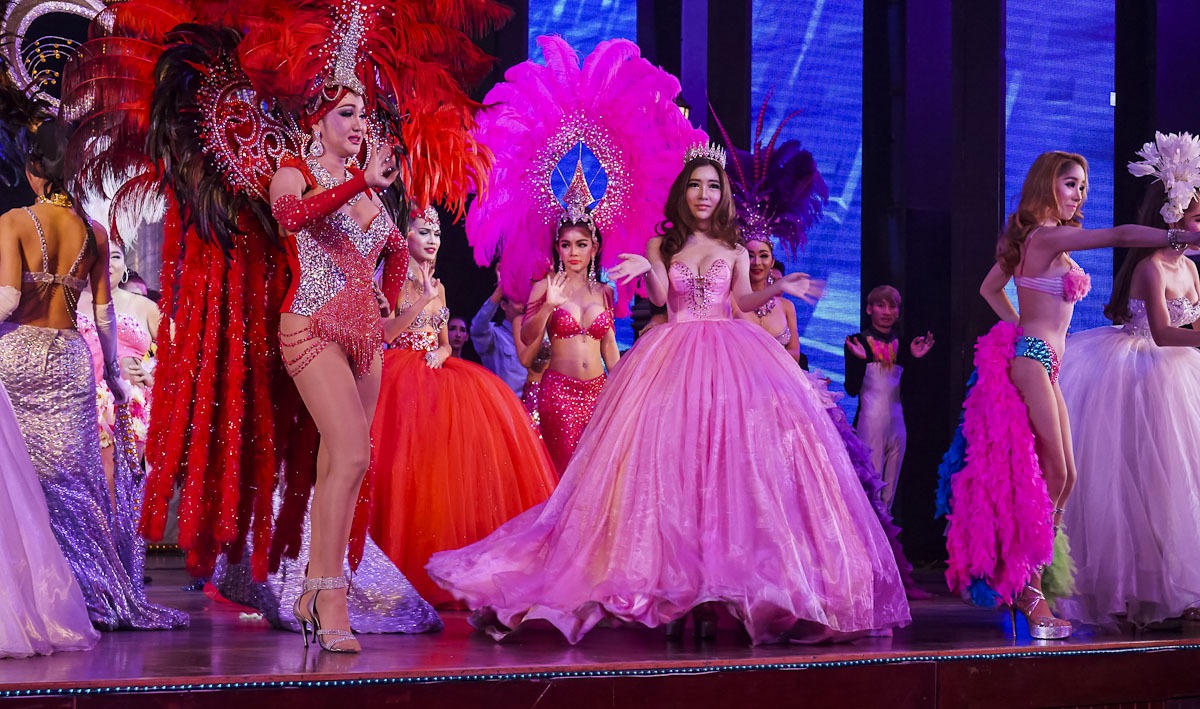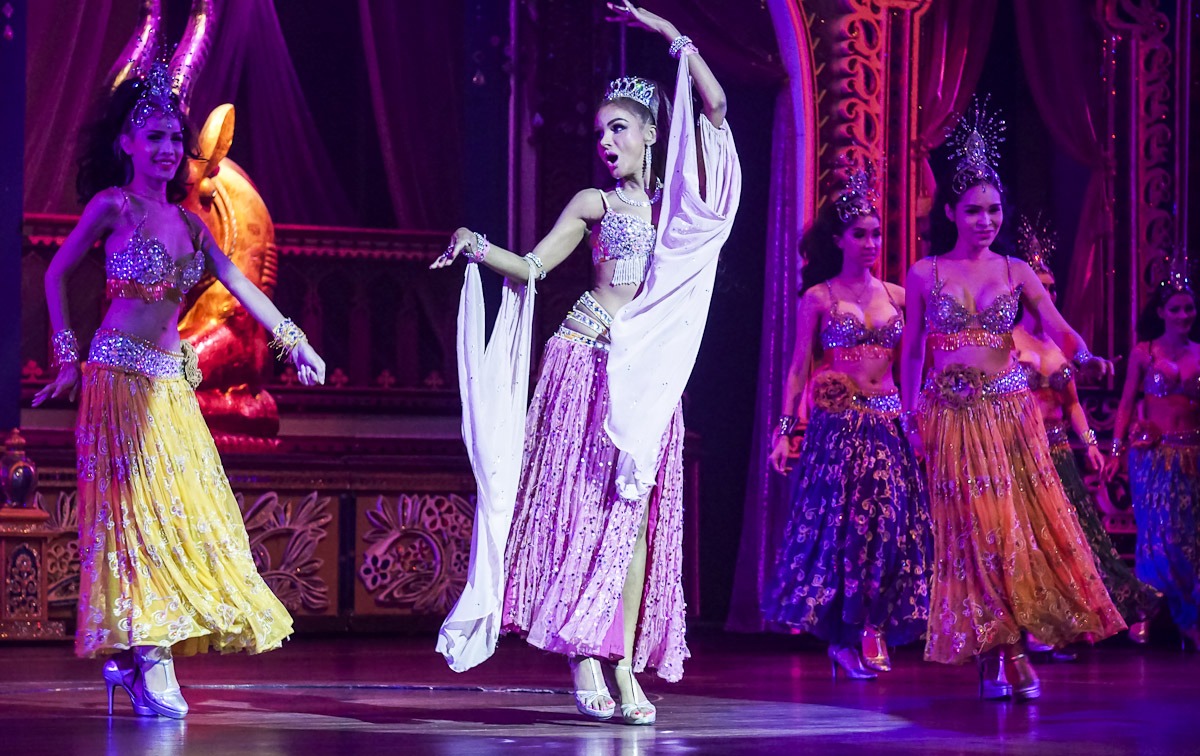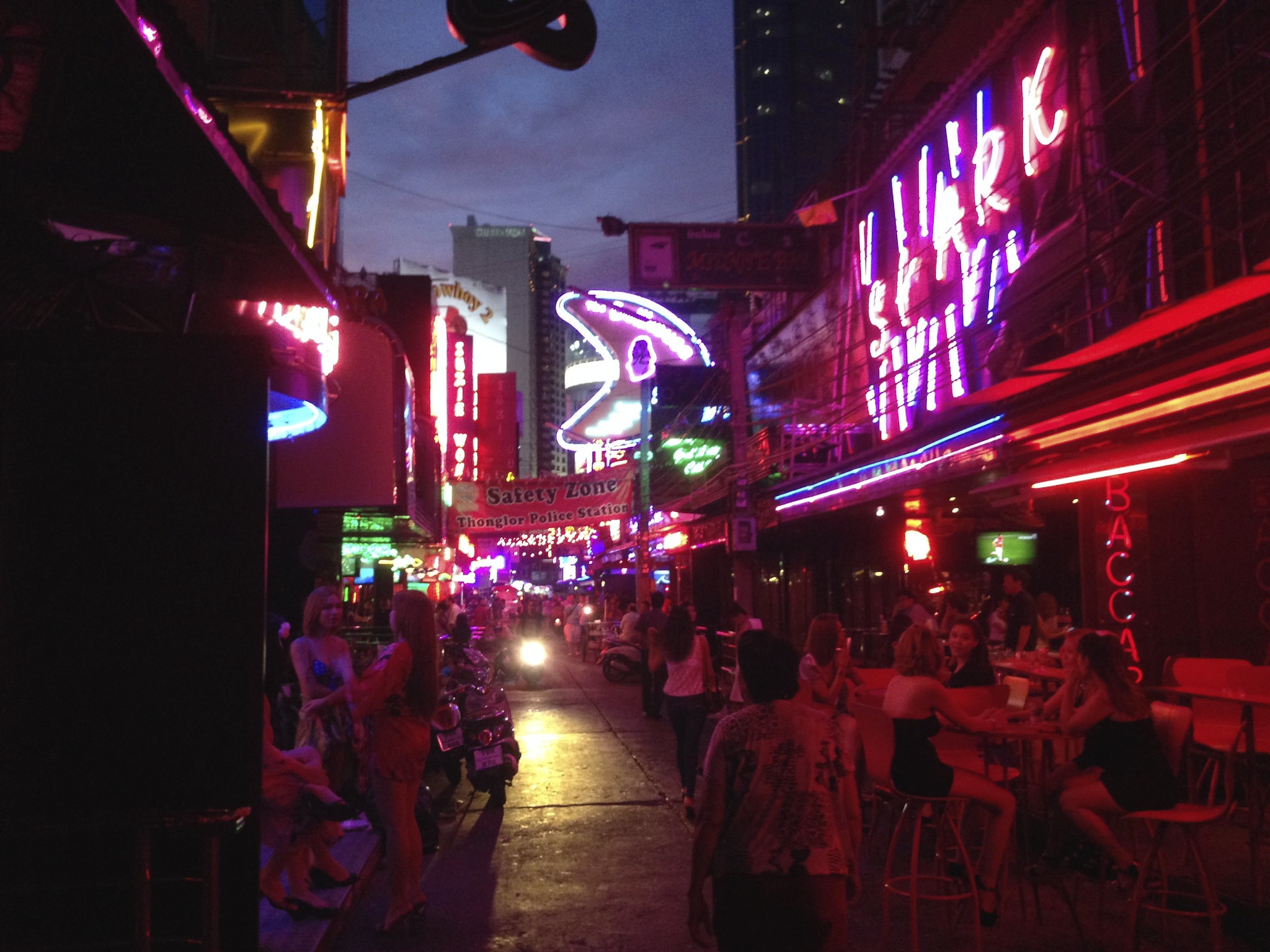Why Are There so Many Ladyboys in Thailand?

By Shruti Kothari
Staff Writer
8/7/2019

Picture Credit: John Shedrick
In 2011, the internationally obscure Thailand’s Got Talent presented Bell Nuntita, who received over 15 million views for her rendition of two popular Thai songs. She started with a sweet, feminine voice, which she swapped out for a husky, male baritone midway. The Thai audience was stunned, and completely delighted; foreign viewers were doubly intrigued by the unlikely emergence of this slight woman as someone who, clearly, had been born male-bodied.
Everyone seems to know about Thailand’s famed ladyboys, or kathoeys, the mysterious, neither male, nor quite female beings who make up a significant part of the local population. There is a lot of buzz on tourist and expat forums about these male-to-female (MTF) individuals, some respectful, and some just downright crude, but whatever the attitude, the question comes up over and over: Why are there so many ladyboys in Thailand?

Bell Nuntita
While several studies in the past two decades have explored genetic factors, there have been no conclusive or even credible analyses; there is no reason to believe that Thai people have an inborn tendency over other people to experience gender dysphoria. There are then two possibilities, which are not mutually exclusive: one, that the population of trans women is greater because they are able to identify and express themselves more easily, and two, that the presence of this population is more established or apparent than in other places.
A study from 2011 estimated that 0.3% of people in the US were trans; a study conducted just five years after claims double that. Other figures suggest between 1-3%, which is on par with some estimates for Thailand. Some countries gather numbers from plastic surgeons, some from telephone health surveys, some from scaling studied samples, others from psychiatrists, and so on. The non-uniformity of collection methods, definitions, and social taboos, renders these statistics unusable. Still, the fact that Bangkok is widely considered the trans capital of the world, ahead of many other Eastern and Western cities, is irrefutable. In fact, as I grew up, trans women were such a normal part of my daily landscape, as shopkeepers, manicurists, and so on, that I learnt far more about what it meant to be trans when I moved to the US for university.
The fact that Bangkok is widely considered the trans capital of the world is irrefutable.
The cause is likely to be cultural. According to Dr Witchayanee Ocha from Rangsit University, “Thai society is based on a ‘three gender system,’ in which transgender people were acknowledged even in old Siam…They were not considered something unusual until the country was influenced by the Western Gender Binary concept.” The idea of gender as a spectrum spans across centuries, and has imbued the country with a deep-rooted tolerance. In fact, the Thai language provides words or phrases for eighteen different genders (around a quarter of what Facebook offers), with many new terms cropping up in recent times. “Having the vocabulary to define my identity helped me discover and express myself. Without these words, I might have continued struggling with myself, maybe even died a straight man,” shares Angel, a sao siap, or a woman who can penetrate.

Witchayanee Ocha
It’s important to note that in Thailand, gender is not only seen as varied and nuanced, but also as a fluid concept that may change over time for any individual. For example, Sisi has not chosen to receive any hormone therapy or surgery, and regularly dresses in traditionally feminine clothing. However, she thinks that in 30 years, when she is 60, she will want to dress and live as a man. “I enjoy being as a woman,” she says, “but it is not something I need, only something I like right now.”
So where did this open attitude come from? The earliest recordings of the third gender stretch as far back as the 14th century, in a creation myth called the Pathamamulamuli, where the makers of the world’s first human beings specifically declare they will create three genders: male, female, and hermaphrodite. At this point in time, Thailand’s belief systems were an integration of Khmer Hinduism, Tai-Chinese animism, and Mon Theravada Buddhism, cultures that already recognized intersex individuals. In fact, recordings of the Indian hijra, the Indonesian bissu, the Malay sida-sida, the Filipino asog, and so on, show a historical acceptance of non-binary people across the region. The dominant non-monotheistic religions of the area had cyclical views of life, and the resulting notion of karma seemed to imply that being intersex was not a perversion, but rather, fated.
The notion of karma seemed to imply that being intersex was not a perversion, but rather, fated.
As the occidental influence in Asia increased, and the Christian view of non-heteronormative societies being sinful crept in, this tolerance began to fall away. Colonizers brought judgment and persecution, and the transgender population became repressed both by them, and by the new generations of converted locals. However, Thailand retained a lot of its openness, because although its interactions with the West were vast and deep-rooted, it was never colonized. Its traditions and social norms remained largely unscathed, and this is perhaps the biggest reason it has emerged as the leader in communal broadmindedness towards trans people: they continued to live openly, to this day.
This heritage of acceptance has gone a long way in laying the foundation for Thailand’s relatively affordable, easily available sex reassignment surgery (SRS) services. While countries like the UK cover SRS in national health insurance, the rigorous regulations and wait times greatly hamper the benefits. Thus, another reason kathoeys are so visible is that they are able to change their bodies to suit their identities more easily.

Ladyboy cabaret (Picture Credit: John Shedrick)
Still, in Thailand, SRS may cost over $10,000, and given the average income, many trans women turn to sex work to help pay for their procedures. While the culture is tolerant, as Ocha explains, “based on Thai Buddhism, trans women are believed to be born as they are in order to repay karmic debt, due to some kind of sexual transgression in a previous life.” Thus, ladyboys are not reviled, but they are pitied; it would be impossible for them to ask for financial support from their families. In fact, many working in the sex industry send sums of money back home, almost in payment for their perceived sins or their chosen lifestyles, in order to ease their relationships, especially with parents or guardians.
Being a distinct part of Bangkok’s notorious sex industry puts them further in the public eye. Not only are there higher concentrations of them at tourist hotspots, but sex tourists fetishize, fear, ridicule, or simply try out, kathoeys. This occidental obsession with whether or not a sex worker might secretly “have a penis” draws great attention to the Thai trans population.

Soi Cowboy bar street in Bangkok (Picture Credit: Clay Gilliland)
Tourist attention is positively bolstered by the Tourism Authority of Thailand’s efforts to promote the country as a pink paradise, a safe haven for LGBTQ+ visitors, which it is. There is very little directed violence against trans people in Thailand compared to other countries, which again, helps non-cisgendered individuals live fearlessly, and therefore, more discernibly. Trans-only cabaret shows and televised beauty contests are fantastic showcases for visitors, but also for participants, as they are able to celebrate their identities loud and proud. A male visitor from Germany, who has attended eight cabaret shows over the last five years, said he finds “Thai ladyboys much more alluring than the ones in other countries, because they are very convincing as women. Maybe because the build of the men here is more slender, and they do not have much body hair to begin with, I really can’t tell they were born as men.” His perspective was that the sheer beauty of Thai trans women ensured their presence was felt worldwide.
Of course, not all trans women work in the sex or entertainment industries; just a few months ago, Thailand elected its first trans member of parliament. Tanwarin Sukkhapisit, a prominent filmmaker and bisexual transgender individual, won a seat for the Future Forward party with the platform of improving LGBTQ+ related laws and policies. Unfortunately, although the Thai outlook was largely unaffected by Western narrow-mindedness, the same is not true for the law. A bloodless coup in 1932 demanded a switch from an absolute monarchy to a constitutional one. This required new legal and political systems, and the People’s Party, who had seized power, based their charter on the British one, which did not recognize the third gender.
To this day, the disparity between law and life is massive. For example, no matter the gender an individual identifies with, and whether or not they’ve had treatment to express that identity, legally a person may only be recognized as the sex they were born to. While seeing a trans woman in a long-term relationship with a cis man is completely normal, because gay marriage is not legal, such a couple could not marry. However, a trans woman in a relationship with a cis woman is largely unheard of, and yet, would be completely legal. This incongruence between adopted Western policy and the Thai way of life further suggests that the lack of colonization, and therefore, the non-absorption of traditional occidental heteronormative values into society, is the most important reason there are so many ladyboys in Thailand. Their international prominence is largely boosted by their sizeable presence in the country’s heaving (sex) tourism scene.
As policy-level changes are implemented, communal acceptance will deepen to the point where kathoeys become fully integrated into society. They will hold occupations and live lifestyles that do not have to center around their sex, gender, or sexuality, any more than other aspects of their selves, like whether or not they like eating cheese, or riding bikes. As the East, the West, the law, and reality catch up with each other and with history, gender-based discrimination will disappear.
